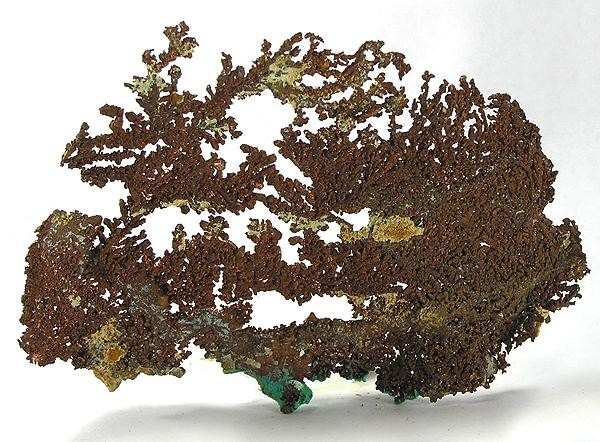Copper is so amazing! It is both an element (Cu on the periodic table) and a mineral. It has a hardness of 2.5 to 3, so it is pretty soft. Copper is valuable because it is malleable and can conduct both electricity and heat; it has been used for many purposes for many centuries.
The oldest copper artifacts discovered date back to around 8700 B.C. in the area that is now known as Northern Iraq. The Copper Age, starting around 6200 B.C. in Antolia, Turkey, ushered in the rise of copper and its use as an alloy. An alloy is a mixture of two metals; bronze is the mixing of copper and tin. Though copper has been used all over the world since the Bronze Age, it did not get its start in the U.S.A. until the 1840’s, when copper mining in Northern Michigan really took off.
The Upper Peninsula is the world’s largest producer of native copper, meaning its copper does not have to be smelted out of ore before it can be used. The Dice Mineral Museum has quite a display of native copper specimens, most of them from the U.P. Since the 1840’s, copper mining in the U.S. has been a major industry, though most of the mining is now concentrated in Arizona, Utah and a few other Western states.
Copper is a reddish-brown color, but it will tarnish when exposed to oxygen. Because it is an excellent conductor, it is used in a lot of electrical equipment such as plumbing, wiring and machinery. It is also essential to all living organisms as a dietary element and is found in human muscles, livers, and bones!









